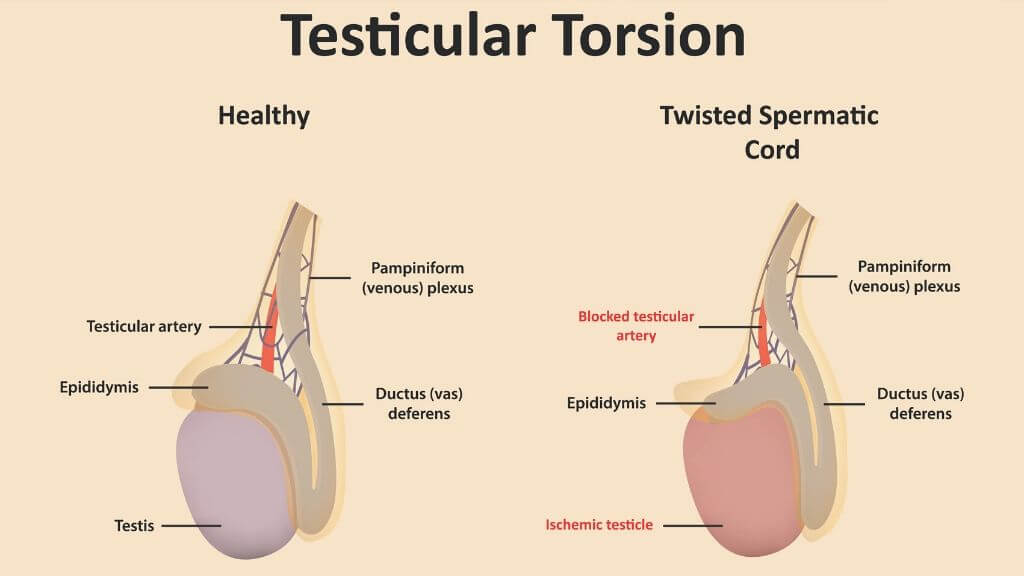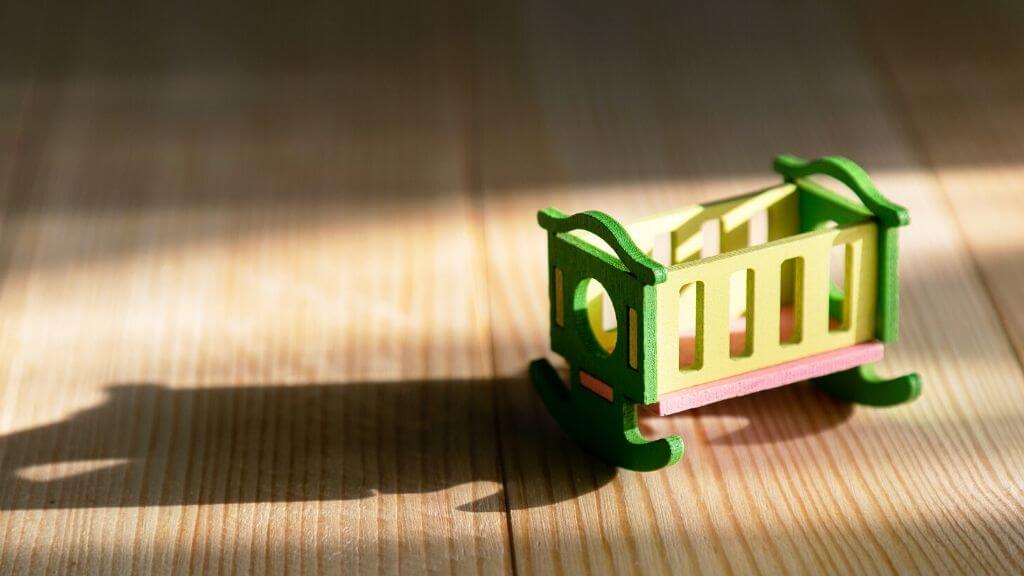Inside the scrotum lie two testicles and a cord called the spermatic cord that delivers blood to the testicles. Testicular torsion is the twisting of this cord, and it restricts blood flow, causing the testicular tissues to die.
Testicular torsion is the most common cause of male-related genital emergencies. While it is relatively uncommon, torsion occurs among adolescent males, with this group accounting for close to 65 percent of the population that is diagnosed.
Causes of Testicular Torsion
Testicular torsion can happen during sleep, exercise, or while you are sitting or standing. There is no apparent trigger, although injuries can increase the risk. Rapid growth during puberty is a common cause of testicular torsion in adolescent males.
Having had testicular torsion once in your life will also increase your risk of getting it later on again. Some studies have also found that colder weather can trigger testicular torsion too.
Congenital factors are known to increase the risk of testicular torsion. A condition known as “bell clapper” deformity causes the testicles to move more freely in the scrotum. This occurs as a result of a congenital disability causing weaker connective tissue. This congenital trait is responsible for almost 90 percent of the cases.
There is a genetic component to testicular torsion as multiple generations can experience the condition. Knowing that family members have had this trait can help you identify symptoms and seek help more quickly.
Symptoms of Testicular Torsion
The most common symptoms include pain and swelling in the scrotal sac. Pain can appear suddenly and can often be severe and debilitating. You may notice swelling on one side of the testicle only or across the entire scrotum, and one testicle may appear higher than the other.

In addition to these symptoms, you may experience:
♦ Vomiting
♦ Nausea
♦ Dizziness
♦ Abdominal pain
♦ Lumps in the scrotal sac
♦ Blood in the semen
Diagnosis of Testicular Torsion
Your doctor will conduct a physical exam of your scrotum to check for swelling. Pinching your thigh is also done as this causes healthy testicles to contract. With testicular torsion, this reflex can disappear.
After a physical examination, your doctor may also run additional diagnostic testing, such as:
♦ Ultrasounds to analyze the blood flow to the testicles
♦ Urine tests to look for infection
♦ Nuclear scans of the testicles can detect reduced blood flow with the injection of radioactive materials into the blood
When pain is severe, your doctor may perform an exploratory surgery when the causes of the testicular torsion are unclear after testing. When the pain is severe, surgical exploration is done right away to identify if the cause is serious. In these cases, prompt treatment is required to avoid the loss of a testicle.

Treatment for Testicular Torsion
Testicular torsion is considered to be a medical emergency, so you should never ignore sharp pain in the testicles. Even if the pain is intermittent, it can reoccur, so you should have your doctor examine you.
A surgical procedure known as orchiopexy is the treatment for testicular torsion. In some cases, your doctor can manually untwist the spermatic cord, but surgery is the more common treatment.
Surgical detorsion is performed under general anesthesia, so you are unaware of the procedure. The procedure is done quickly because if blood flow to the testicles is cut off any longer than six hours, the tissue will start dying, and the testicle may need to be removed.
A small incision is made into the scrotum so the cord can be untwisted. Tiny sutures are used to keep it in place and prevent future rotation and twisting.
There are also preventative measures for those at risk of testicular torsions, such as men that have a family history of the condition. For those with genetic traits predisposing them to testicular torsion, a surgical procedure can be done.
Both testicles are attached to the inside of the scrotum, so they are unable to rotate freely. Even if you had to have one testicle removed because of torsion, the remaining testicle would produce enough sperm, as men in this situation have not been found to have low sperm counts as a result.
Natural Treatment for Testicular Torsion
Testicular torsion is a medical emergency, and surgical treatment is required. Once a successful procedure has been performed, you can try natural treatments to help relieve pain and inflammation. It is also important to prevent infections after any surgical procedure.
♦ Relieve pain: Stinging nettle contains compounds that relieve inflammation and pain. Pine bark is another natural plant-based remedy that offers analgesic effects.
♦ Reduce inflammation: Lutein is a carotenoid known to possess anti-inflammatory benefits. Pygeum is typically used to treat prostate conditions, but it also acts as a natural anti-inflammatory agent. Pygeum specifically prevents the activity of prostaglandins, which are indicators of inflammation.
♦ Prevent infection: A single protein found in pumpkin seed extract is shown to have antibacterial properties that can protect against infection. The risk of infection increases after surgery, and pumpkin seed extract can reduce the risk and allow time for healing.

Complications Associated with Testicular Torsion
As a medical emergency, ignoring testicular torsion can result in several serious complications.
♦ Infection: When dead or dying tissue is not removed, gangrene can occur, which is a potentially life-threatening infection. Gangrene can spread rapidly and cause shock if not treated quickly.
♦ Deformity: Losing a testicle causes a cosmetic deformity, which can lead to emotional trauma. Men who have had a testicle removed often opt for a testicular prosthesis to help restore a sense of normality.
♦ Infertility: Infertility can happen of both testicles become damaged. Losing only one testicle should not cause this.
♦ Atrophy: Testicular atrophy can develop when torsion is untreated. The testicles will shrink significantly and can become incapable of producing sperm.
♦ Testicular death: A damaged testicle can be saved if treated within a four-to-six hour window. Any damage left untreated longer than this results in testicular death and necessary removal of the testicle.
What Is the Long-Term Outlook?
When treated within six hours, testicular torsion doesn’t result in testicle removal in 90 percent of cases. When treatment is not delivered for 24 hours, the testicle ends up being removed 90 percent of the time.
If a testicle has to be removed, hormone production will be impaired, and this can cause infertility. To avoid serious complications, seek medical attention as soon as you suspect testicular torsion. Surgery is effective when done early enough, and can help you lead a normal healthy life.






